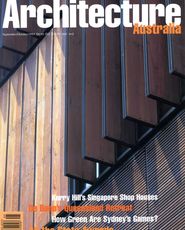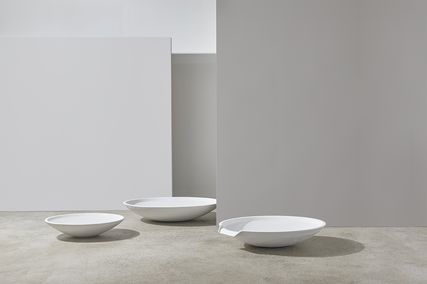No Attempt to Address PurposeI was angered by the article (I cannot call it a ‘review’, as you do) by Peter Zellner of the Alessio house (AA July/August 1997): for whom was it written and why? After struggling through the absurd and self-contradicting text, I was left with the conviction that, to Zellner and Rijavec, domestic architecture is simply walk-through sculpture, an architect’s self-indulgence courtesy Someone Else’s money and CAD wizardry; thumbing its nose at its surroundings. Surely the merit of a house lies primarily in the internal workings as a living space and in the effectiveness of the envelope to deal with the climatic elements. In this article, the only reference to a practical element is to the skylights which are not there for lighting but to give a ‘comical hue’ (funny colour?) to the house. A furniture layout would indeed have been interesting, as would a streetscape photograph. How can one take seriously a critique that makes no attempt to address the purpose of the design and the success or otherwise of the achievement? What was the client’s brief? Did they really ask that the only sunshine let into the house should be from the west? Or is Rijavec a fashionable have-to-have so that the name alone gives value for money? —From Margaret Ferrie, Oatley, NSW Learn DisciplineWe have read the RAIA President’s foreword in the July/August edition of Architecture Australia and agree with the sentiments expressed with respect to the value of an architect’s services, especially when “… someone else can do that for half the price …” We can defend the profession’s expertise against project managers, contract administrators and interior designers. However, our position is undermined when architects themselves offer to do work “for half the price” and prefer not to undertake administration, the very task for which an architect is trained to realise his/her designs. How can we seriously sell the value of the profession when our own members understate their worth? In some cases, clients have reported to us that a fee is 3.5 percent for complex projects when the real fee should be about 8 percent. The South Australia Architects Act recommends that architects do not undertake work if the fees are less than what is required to “professionally” execute the project (refer RAIA PN AN 01.01.300). But we are starting to lose faith in the profession and the RAIA when members do not follow either the Code of Ethics or the values expressed in the President’s foreword. Our despair is heightened when we attend RAIA seminars, only to hear that the RAIA is only interested in small (1-4 person) practices (the most recent example was the June seminar to discuss proposed amendments to the NSW Architects Act). The problems in the profession cannot be fixed overnight—and certainly not while members lack discipline as a group. | It was lack of discipline that allowed project managers and the like to make inroads into the quality of service we provide to the community.
It was most appropriate to find, in a letter tucked away on page 96, that the CSIRO is being supported by the RAIA in its study of the effects of reduced design fees. —From Nicholas Ferrara, Thrum Architects, Sydney Copyright CheekAA has again published WE-EF Lighting’s full-page advertisement showing Peter Corlett’s sculpture of Sir Edward ‘Weary’ Dunlop (first published in AA’s January/February issue). The crude uplighting designed by Barry Webb & Associates was installed without the artist’s agreement or consultation and displays ignorance and insensitivity to its subject. It’s also pretty rude of WE-EF not to acknowledge the artist as author of the work and bloody cheeky of them to claim, as suggested in their advertisement, either copyright of the sculpture or copyright of this image; which does not depict the names of the artist or the copyright owner. It’s disappointingly common for the architectural profession and media to regard art as anonymous bits of architectural hardware but this case verges on the illegal, as both the advertiser and Architecture Australia have exploited the artist (and copyright holder) without permission, for commercial gain. I think you owe Peter Corlett an apology, and should seek and publish his views on appropriate artificial lighting of the sculpture to correct the misinformation presented in the advertisement. You could also inform readers as to the correct method of acknowledging artworks: i.e. name of artist, title of work, medium, size/scale of work, date of work, location and owner of work, copyright holder (if not the artist). —From Willys Keeble (Peter’s wife), North Fitzroy, Victoria FixIn AA’s July/August issue, several errors were made in Davina Jackson’s report on the Overseas Archives in Aix-en-Provence, by Thierry Lacoste and others. The photographer was Jean-Marie Monthiers: the facade panels are an innovative yet tested system of three layers of render in aluminium frames. Also, there are no offices and meeting rooms in the new building. Our apologies for these errors—Ed. We welcome your concise views on issues of interest to architects. Please provide fax and phone numbers-we may need to edit. Only letters to the editor, not copies of letters to others, will be published. The RAIA’s chief executive officer has right of reply to criticism of the Institute. Address to 4 Princes Street, Port Melbourne 3207. Fax (03) 9646 4918. Or email |
Weldon


















